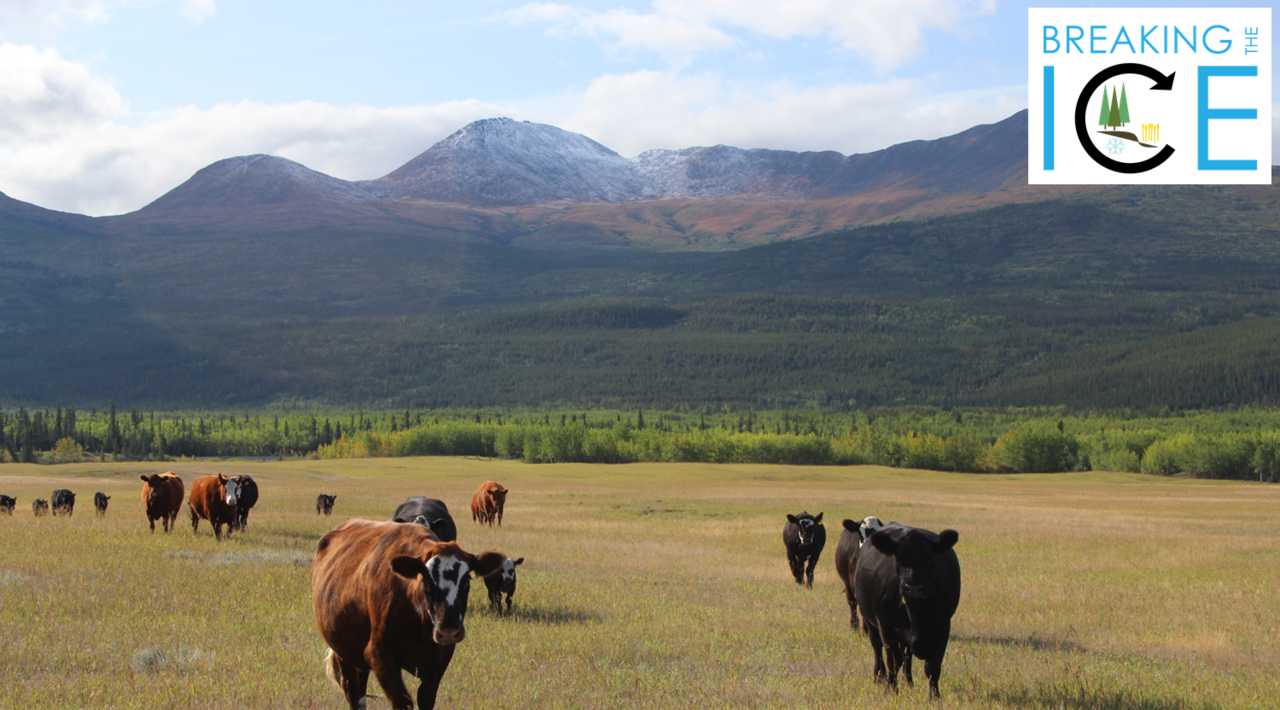Project
Land use change on thawing permafrost soils

Breaking the Ice – Consequences of northwards extending agriculture for soil organic matter cycling under a changing climate
What happens when permafrost soils under boreal forest are changed into arable land or grassland? Will cultivation accelerate thawing and thereby microbial activity? How will agricultural practices, such as ploughing, fertilization, crop rotation change microbial communities and their sensitivity to global warming? These questions shall be answered in this project.
Background and Objective
The earth is warming and human population is growing. It is thus likely, that thawing permafrost soils under natural vegetation will be cultivated in the near future. It is however completely unknown, how this will affect soil organic matter cycling in these soils. It is also not understood, how cultivation of such nutrient poor natural soils will change the temperature sensitivity of organic matter decomposition under ongoing climate change. Such knowledge is however crucial for predicting CO2 fluxes between atmosphere and biosphere. Therefore the project aims to evaluate:
- Soil organic carbon stock changes after land-use change on frozen and unfrozen soils as a function of time.
- Changes in soil temperature, active layer depth and potential litter decomposition upon land-use change
- Evaluate changes in microbial carbon use efficiency, community composition and temperature sensitivity of microbial activity
Approach
The Yukon Territory in Northwest Canada has a more than 100 years old history of land-use changes on cold soils. This is unique and provides the opportunity to study soil organic matter dynamics after land-use change as a function of time in a chronosequential approach. An additional thermosequence exists via the temperature gradient from south (mostly permafrost-free soils) to the north (mostly permafrost soils) of the Yukon Territory. Microbial processes will be quantified in incubation experiments and results will be implemented in turnover models.
Results
- When permafrost-affected forest soils were used for agriculture, there was a significant loss of soil C (but not in the case of non-permafrost-affected soils). This was the case under both arable and grassland use. Permafrost could not be detected in any of the sampled agricultural soils (in the upper 80 cm). This was a clear indication that deforestation leads to increased thawing of soils.
- On average, agricultural soils were 2°C warmer than forest soils, and litter decomposition was significantly accelerated, at least in cropland soils. Irrigation may also have had an amplifying effect on the latter, as the effect of enhancing litter decomposition was not significant in the infrequently irrigated grasslands.
- Microbial use efficiency was significantly increased after reuse, which could be attributed to increased nitrogen availability and higher pH values. Warming had a positive effect on C use efficiency (increased microbial growth).
- Overall, it can be concluded that climate-smart agriculture in areas of discontinuous permafrost will only work if deforestation is limited to permafrost-free soils. Through improvements in soil conditions for microbial metabolism (as well as C imports), it may be in permafrost-free soils that agriculture has a positive effect on soil C stocks.
Links and Downloads
Thünen-Contact

Involved Thünen-Partners
Involved external Thünen-Partners
-
Agriculture and Agri-Food Canada / Agriculture et Agroalimentaire Canada (AAC)
(Ottawa, Québec, Kanada)
Funding Body
-
Deutsche Forschungsgemeinschaft (DFG)
(national, öffentlich)
Duration
1.2019 - 3.2022
More Information
Project funding number: PO 2331/1-1
Project status:
finished
Publications
- 0
Schroeder J, Peplau T, Pennekamp F, Gregorich E, Tebbe CC, Poeplau C (2024) Deforestation for agriculture increases microbial carbon use efficiency in subarctic soils. Biol Fertil Soils 60(1):17-34, DOI:10.1007/s00374-022-01669-2
- 1
Ward Jones M, Habeck JO, Ulrich M, Crate S, Gannon G, Schwoerer T, Jones B, Kanevskiy M, Baral P, Maharjan Amina, Steiner J, Spring A, Price MJ, Bysouth D, Forbes BC, Verdonen M, Kumpula T, Strauss J, Windirsch T, Poeplau C, et al (2024) Socioecological dynamics of diverse global permafrost-agroecosystems under environmental change. Arctic Antarctic Alpine Res 56(1):2356067, DOI:10.1080/15230430.2024.2356067
- 2
Peplau T, Poeplau C, Gregorich E, Schroeder J (2023) Deforestation for agriculture leads to soil warming and enhanced litter decomposition in subarctic soils. Biogeosciences 20(5):1063-1074, DOI:10.5194/bg-20-1063-2023
- 3
Poeplau C (2022) "Breaking the ice". Braunschweig: Thünen Institute of Climate-Smart Agriculture, 2 p, Project Brief Thünen Inst 2022/37a, DOI:10.3220/PB1668502011000
- 4
Poeplau C (2022) "Breaking the ice". Braunschweig: Thünen-Institut für Agrarklimaschutz, 2 p, Project Brief Thünen Inst 2022/37, DOI:10.3220/PB1666678692000
- 5
Peplau T, Schroeder J, Gregorich E, Poeplau C (2022) Subarctic soil carbon losses after deforestation for agriculture depend on permafrost abundance. Global Change Biol 28(17):5227-5242, DOI:10.1111/gcb.16307
- 6
Schroeder J, Peplau T, Gregorich E, Tebbe CC, Poeplau C (2022) Unexpected microbial metabolic responses to elevated temperatures and nitrogen addition in subarctic soils under different land uses. Biogeochemistry 160(1):105-125, DOI:10.1007/s10533-022-00943-7
- 7
Schroeder J, Kammann L, Helfrich M, Tebbe CC, Poeplau C (2021) Impact of common sample pre-treatments on key soil microbial properties. Soil Biol Biochem 160:108321, DOI:10.1016/j.soilbio.2021.108321
- 8
Peplau T, Schroeder J, Gregorich E, Poeplau C (2021) Long-term geothermal warming reduced stocks of carbon but not nitrogen in a subarctic forest soil. Global Change Biol 27(20):5341-5355, DOI:10.1111/gcb.15754
- 9
Poeplau C, Schroeder J, Gregorich E, Kurganova I (2019) Farmers' perspective on agriculture and environmental change in the circumpolar north of Europe and America. Land 8(12):190, DOI:10.3390/land8120190

![[Translate to English:] [Translate to English:]](/media/_processed_/6/4/csm_titel_CO2Kampagne8_afeea2273e.png)
![[Translate to English:] [Translate to English:]](/media/_processed_/4/1/csm_titel_93px_CO2Kampagne8_9b0f3354d4.png)





